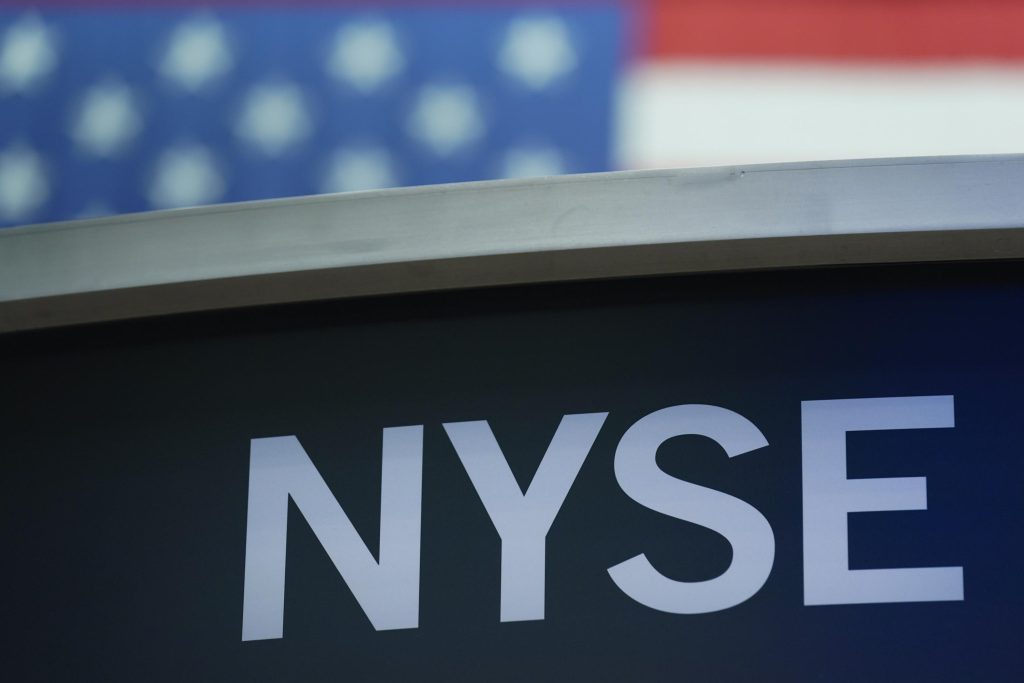
Stocks picked up more gains on Friday as Wall Street finished its best month since November 2020, a welcome respite for investors after a tough year for the market.
The S&P 500, a benchmark for many stock funds, rose 1.4% and closed 9.1% higher for the month of July. A rebound in technology shares, major retailers and other companies that rely on direct consumer spending helped boost the index’s broad gains this month. The index is still down 13.3% for the year.
The tech giant Nasdaq rose 1.9%, ending the month 12.4% higher, while the Dow Jones Industrial Average rose 1% and gained 6.7% for the month.
The recent rally came as investors weighed a mix of corporate earnings reports and new data showing that inflation jumped by the most in four decades last month.
Stock gains in recent weeks have been driven by better-than-expected corporate earnings reports and lower bond yields, which eased after a big rally this year amid expectations of higher interest rates.
“Treasury yields have fallen sharply,” said Rob Haworth, senior investment analyst at US Bank Wealth Management. “With inflation soaring, I think the expectation is that the Fed will stay on the right track, but it’s bad enough for the economy that they have to turn into a pivot in 2023.”
The S&P 500 Index rose 57.86 points to 4,130.29 points. The Dow Jones index rose 315.50 points to close at 32,845.13 points. The Nasdaq index rose 228.09 points to 12,390.69 points.
Small-cap stocks also rose. The Russell 2000 Index rose 12.20 points, or 0.7%, to 1,885.23 points. It ended July with a gain of 10.4%.
Weak economic data, including a report on Thursday showing that the US economy contracted in the last quarter and could be in the doldrums, also stimulated stocks by giving some investors confidence that the Federal Reserve will be able to undo its aggressive pace of raising interest rates in a timely manner. closer. than expected.
The central bank raised its key short-term interest rate by 0.75 percentage points on Wednesday, bringing it to the highest level since 2018. The Federal Reserve raised interest rates in an effort to slow the US economy and cool inflation.
The measure of inflation that the Federal Reserve closely tracks jumped 6.8% in June from a year ago, the largest increase in four decades, leaving Americans without respite from rising prices. On a monthly basis, the Commerce Department said Friday, inflation accelerated to 1% in June from 0.6% in May.
The figures confirmed the continuation of inflation, which undermines the purchasing power of Americans, weakens their confidence in the economy and threatens Democrats in Congress in the run-up to the November midterm elections.
However, some market watchers advised not to focus too much on the June data.
“This gauge of inflation is for June and we know a lot has changed since then, especially gas prices, so investors should put this inflation report in historical context,” said Jeffrey Roach, chief economist at LPL Financial. Looking ahead, inflation rates for July will ease slightly from the previous month as food and energy costs should ease in July.
However, inflation hit one company in its earnings Friday: basic consumer goods giant Procter & Gamble. Shares of laundry detergent maker Tide tumbled 5.3% after the company said consumers were cutting back, but the company’s recent price increases kept earnings higher.
Other corporate earnings reports were more encouraging.
Exxon and Chevron posted record quarterly profits last quarter amid rising oil and gas prices. The two companies made $46 billion last quarter and nearly four times the amount they made in the same period the previous year. Chevron shares jumped 8.9 percent to a six-week high, while Exxon rose 4.6 percent.
Amazon stock rose 10.4% for the biggest gain in the S&P 500 after the company reported a quarterly loss, but its revenue jumped sharply in the quarter.
Apple stock rose 3.3% after its quarterly earnings came in better than Wall Street had expected. The iPhone maker saw its April-June profit fall 10% while revenue rose 2% as it grappled with manufacturing issues and inflationary pressures.
It was a mixed day in the bond market. The two-year Treasury yield, which tends to move according to the Federal Reserve’s forecast, rose to 2.89% from 2.87% late Thursday. The 10-year yield, which affects mortgage rates, fell to 2.65% from 2.67%.

“Web maven. Infuriatingly humble beer geek. Bacon fanatic. Typical creator. Music expert.”





More Stories
Bank of Japan decision, China PMI, Samsung earnings
Dow Jones Futures: Microsoft, MetaEngs Outperform; Robinhood Dives, Cryptocurrency Plays Slip
Strategist explains why investors should buy Mag 7 ‘now’